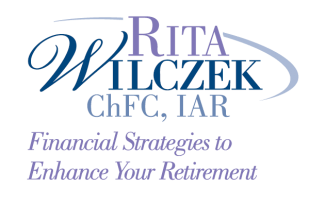The Federal Reserve's Unprecedented Moves
by Rita Wilczek on Jun 3, 2020
The Federal Reserve’s Unprecedented Moves
What they are. How they help.
Provided by Rita Wilczek
In response to the COVID-19 pandemic, almost every state in America is under some sort of stay-at-home order. This unprecedented time has also led many businesses, large and small, to downsize or close up shop entirely. In response to the drastic impact that COVID-19 has had on global and domestic concerns, the Federal Reserve Board has taken a multitude of measures to buttress the American economy.
A Reserve reminder. The Federal Reserve’s role is guided by its mandate from Congress to promote employment and stable prices. The Fed also is responsible for the stability of the financial system, including the safety and soundness of the nation’s banking structure. To pursue these goals, the Fed in recent weeks has been using its full range of authorities to provide support for the flow of credit to families and businesses.
Interest rate policy. Since March 3, the rate banks pay to borrow from each other has been cut to a range of zero to 0.25 percent. This lowers the cost of borrowing, in general, but it also reduces the amount of interest income many savers receive.1
Purchasing securities. Much like during the economic downturn of 2008-2009, the Fed is buying a wide range of securities. The Fed initially planned to buy at least $500 billion in Treasury securities and $200 billion in government-guaranteed mortgage-backed securities; it eventually made the purchases open-ended.2
Support for small businesses is available. On April 9, the Fed released two new loan programs. the “Main Street New Loan Facility” and the “Main Street Expanded Loan Facility.” Both have received $75 billion from the U.S. Treasury to protect against losses and use existing banks to offer four-year loans to U.S. businesses with up to 10,000 employees or revenues of less than $2.5 billion in 2019. To help even more, repayment of the loan can be deferred for up to one year, in many cases.3
Creating new programs. The Fed established a third facility, the Term Asset-Backed Securities Loan Facility (TALF), to support the flow of credit to consumers and businesses. The TALF is chartered with creating asset-backed securities, backed by student loans, auto loans, and credit card loans. The Fed also is facilitating the flow of credit to municipalities by creating several new programs.4
An international currency swap. By dusting off another older tool in its arsenal, the Fed is making U.S. dollars available to central banks around the world. In exchange, the Fed receives foreign currency and charges interest on the exchange. To encourage “buy-in,” the Fed has cut the rate it charges on those swaps with central banks in Canada, England, the eurozone, Japan, and Switzerland.5
As health professionals and government officials work to save lives and slow the spread of COVID-19, the economy has struggled due to many factors, including a drop in consumer spending. However, due to the breadth and speed at which the Fed has responded, many of those who need financing may receive help during this challenging time.
Rita Wilczek may be reached at (952) 542-8911 or rwilczek@hirep.net
www.ritawilczek.com
This material was prepared by MarketingPro, Inc., and does not necessarily represent the views of the presenting party, nor their affiliates. This information has been derived from sources believed to be accurate. Please note - investing involves risk, and past performance is no guarantee of future results. The publisher is not engaged in rendering legal, accounting or other professional services. If assistance is needed, the reader is advised to engage the services of a competent professional. This information should not be construed as investment, tax or legal advice and may not be relied on for the purpose of avoiding any Federal tax penalty. This is neither a solicitation nor recommendation to purchase or sell any investment or insurance product or service, and should not be relied upon as such. All indices are unmanaged and are not illustrative of any particular investment.
Citations.
1 - CNBC.com, 2020
2 - Brookings.edu, 2020
3 - NationalReview.com. 2020
4 - Congressional Research Service, 2020
5 - Congressional Research Service, 2020
